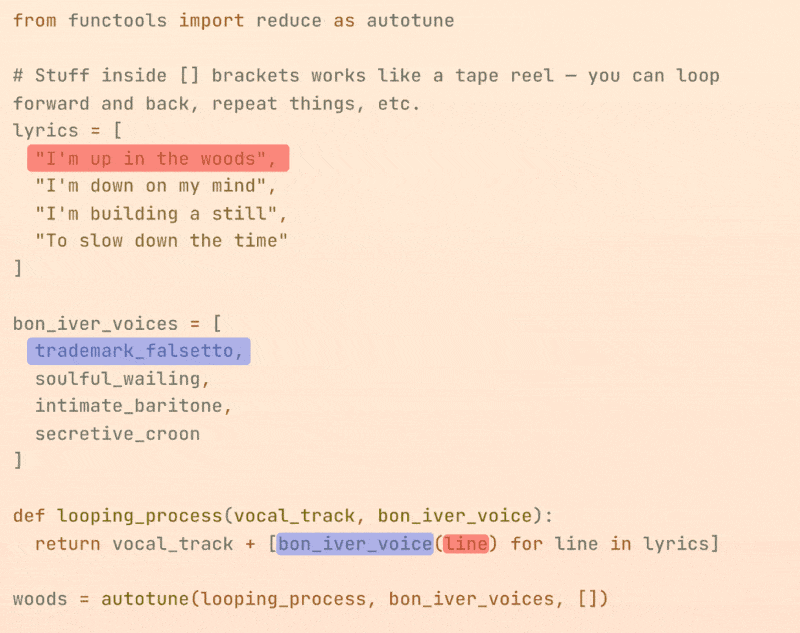Lightmode
Lightmode's first release, turtle graphics in Lua, is available as a no-cost download on itch.io or via this google drive link.
Schedule a free intro call here.
We often talk about code as if it were fast fashion: a world of trends and waste where everything is constantly changing.
But code is really more like sculpture. Rather than "making more stuff," engineering is about chipping away towards the elegant expression of an idea.
You don't need a math degree or a coding bootcamp to do this. You just need the right perspective.
For artists, this is not a new idea. Books like Betty Edwards' wonderful Drawing on the Right Side of the Brain have shared simple, effective ways of learning to draw for decades.
That works for coding, too. Let's take an example:
Reducers are a powerful coding pattern. A reducer takes a list of things, modifies them, and spits them back out again.
Writing a complex reducer is an advanced programming skill; they're a core part of many large apps, including Facebook and Uber.
But a musician will recognize this pattern as imitative counterpoint (or maybe "autotune"). Here's Bon Iver's Woods, written here in valid Python:

The mark of a good engineer is not "smartness"; it's the ability to recognize and work creatively with patterns.
If you watch an experienced programmer work, you'll notice how they speak, squint, and even move their body like a painter trying to "find" the contour of a subject's profile.
What we usually think of as "coding"—typing words into a text editor—is a secondary skill. Seeing the pattern comes first.